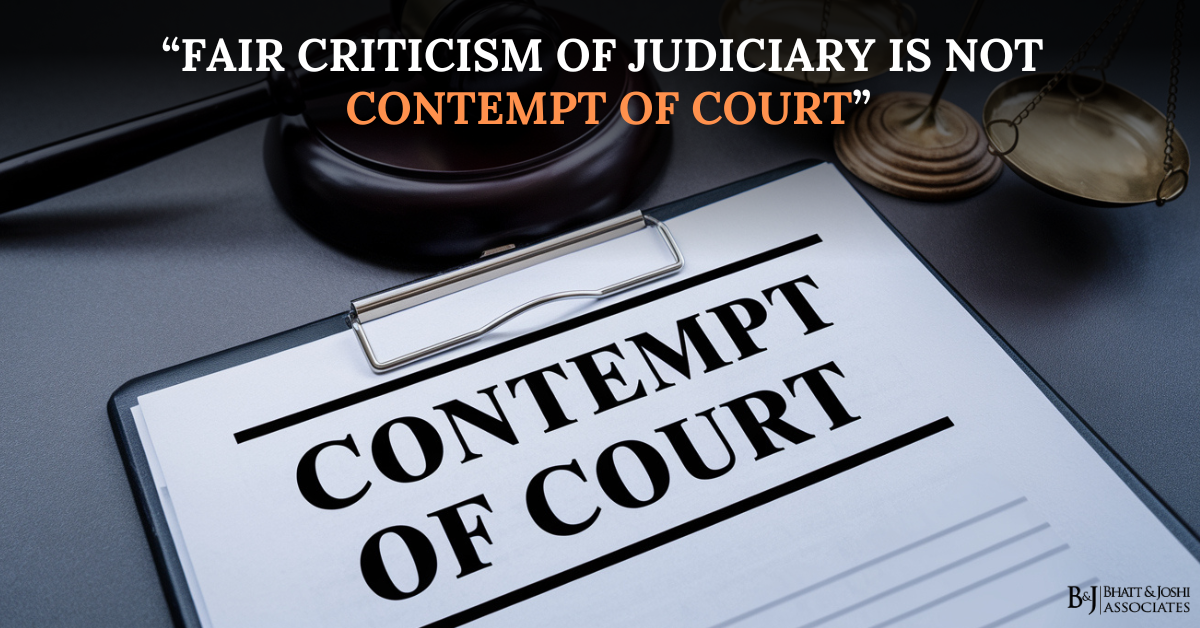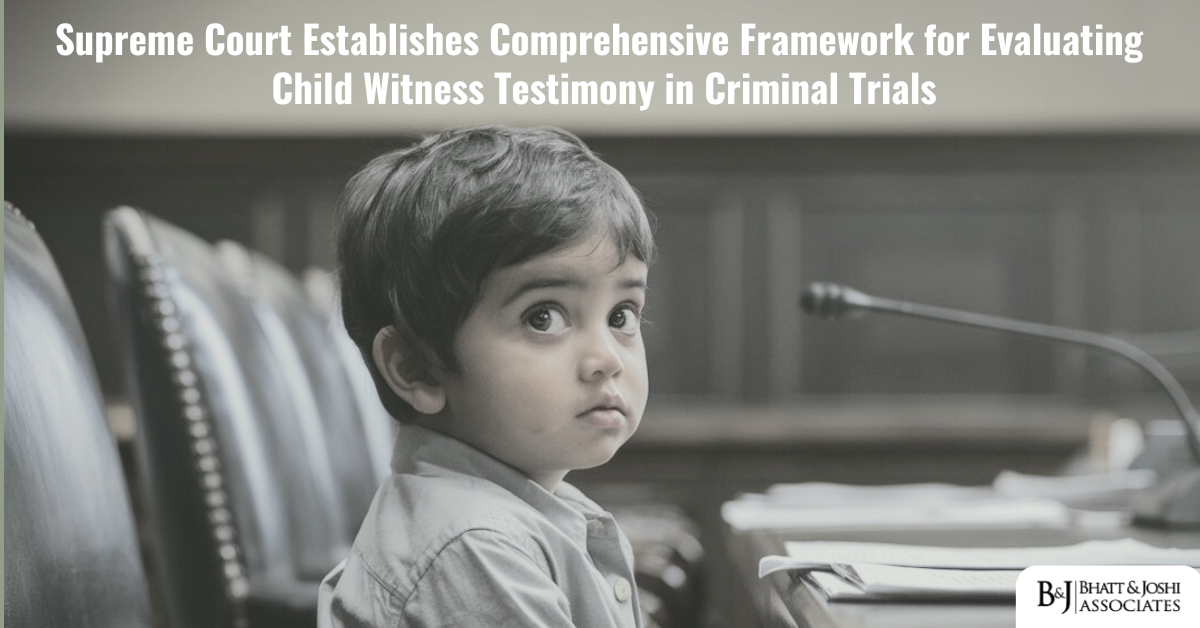Introduction:
The judiciary plays a pivotal role in upholding the rule of law and ensuring justice. As an institution, it is essential for the judiciary to function independently and impartially. However, its actions and decisions are often subject to public scrutiny. The balance between safeguarding judicial independence and allowing fair criticism is a delicate one. This article explores the concept of fair criticism of the judiciary, distinguishes it from contempt of court, and discusses historical contexts, legal definitions, exceptions, and relevant case laws.
Contempt of court:
Contempt of court is a legal concept designed to safeguard the integrity, authority, and effectiveness of the judicial system. It encompasses a range of actions or behaviors that undermine the court’s ability to administer justice fairly and efficiently. This legal principle serves multiple purposes: it ensures respect for court orders, protects the judicial process from undue interference, and maintains public confidence in the legal system. Contempt can be categorized into two main types: civil contempt, which involves disobedience of court orders, and criminal contempt, which includes actions that obstruct justice or disrespect the court’s authority. The power to punish for contempt is an inherent aspect of judicial authority, allowing courts to enforce their rulings and maintain order in legal proceedings. While contempt laws are crucial for the functioning of the judiciary, they also raise important questions about the balance between judicial power and individual rights, particularly freedom of speech. As such, the application of contempt of court remains a subject of ongoing legal and public debate in many jurisdictions.
Historical Context:
The principle of contempt of court has evolved over centuries, reflecting the changing attitudes toward judicial independence and public discourse. Historically, the concept of contempt can be traced back to the English legal system, where it was designed to protect the authority and dignity of the court.
In medieval England, contempt of court was used to enforce obedience and prevent disrespect toward judicial proceedings. Early cases often involved physical acts of defiance, such as failure to comply with court orders. As the legal system evolved, the scope of contempt expanded to include acts or statements that could undermine the judiciary’s authority.
The concept of “scandalizing the court” emerged as a specific form of contempt. This involved making derogatory remarks about the judiciary or its decisgivions that could potentially undermine public confidence in the legal system. Over time, the judiciary in various jurisdictions began to grapple with the balance between protecting its own dignity and respecting freedom of speech.
Evolution of Contempt of Court in India:
- The concept of contempt of court in India has its roots in the British colonial legal system and was retained after independence in 1947. The Indian Constitution, adopted in 1950, explicitly recognized the power to punish for contempt under Articles 129 and 215 for the Supreme Court and High Courts respectively. India’s first legislative attempt to codify contempt laws came with the Contempt of Courts Act, 1952, which was later replaced by the more comprehensive Contempt of Courts Act, 1971. This Act, still in force today, defines both civil and criminal contempt and outlines procedures for contempt proceedings. Historically, India’s application of contempt laws has been relatively stringent compared to other democracies, reflecting the judiciary’s perceived need to maintain its authority in a diverse and complex society.
- In recent decades, India has seen significant developments and debates surrounding contempt laws. A notable change came in 2006 with an amendment to the Contempt of Courts Act, which introduced truth as a valid defense if invoked in the public interest and in good faith. This amendment aimed to balance judicial dignity with principles of transparency and accountability. High-profile cases in the late 20th and early 21st centuries have sparked ongoing discussions about the scope of contempt laws, particularly in relation to freedom of speech. The rise of social media and online platforms has further complicated these debates, challenging the judiciary to adapt its approach to contempt in the digital age. As India continues to evolve as a democracy, the application of contempt laws remains a subject of legal and public discourse, with efforts to strike a balance between protecting judicial integrity and preserving the right to free expression.
Meaning of contempt of court:
Contempt of court refers to actions or statements that obstruct or discredit the administration of justice. It encompasses two main categories:
- Civil Contempt:
This occurs when an individual fails to comply with a court order, such as refusing to produce documents or failing to adhere to custody arrangements. Civil contempt aims to compel compliance with court orders.
- Criminal Contempt:
This involves behavior that disrespects or undermines the authority of the court, such as making derogatory comments about the judiciary, disrupting court proceedings, or publishing prejudicial material.Contempt of court is a legal tool designed to preserve the authority of the judiciary and ensure the smooth functioning of the legal system. However, it is crucial to differentiate between legitimate criticism and contemptuous behavior. While contempt of court aims to uphold judicial integrity, it must be applied in a manner that does not stifle free expression or public debate.
Fair criticism of the judiciary:
Fair criticism of the judiciary is an essential component of a healthy democratic society. It allows for transparency and accountability, enabling citizens to express their views on judicial decisions and practices without fear of reprisal. Fair criticism is characterized by the following features:
- Constructive Intent: Fair criticism aims to address perceived shortcomings in the judiciary or legal system constructively. It seeks to improve the administration of justice rather than simply disparaging the court.
- Factual Accuracy: Criticism should be based on accurate information and provide a balanced view of the issues at hand. Misrepresentation or distortion of facts can cross the line into contempt.
- Respectful Discourse: While criticism may be sharp, it should be expressed respectfully and without personal attacks on judges or the judicial system. Ad hominem remarks or inflammatory language can undermine the legitimacy of the critique.
- Public Interest: Criticism that serves the public interest by highlighting systemic issues or advocating for reform is generally viewed as fair. Such criticism contributes to the discourse on justice and legal reform.
Exceptions to Contempt of Court:
Several exceptions allow for criticism of the judiciary without constituting contempt of court. These exceptions recognize the importance of maintaining a balance between judicial authority and freedom of expression.
Exceptions to contempt of court regarding fair criticism of the judiciary serve as essential safeguards in balancing judicial authority with the principles of free speech and public accountability. The Contempt of Courts Act, 1971, particularly through Sections 5 and 13, outlines key provisions that protect fair criticism from being deemed contemptuous. Section 5 explicitly states that “fair and accurate” reporting of judicial proceedings, or a fair criticism of judicial acts, is not contempt of court. This ensures that media and individuals can report on court proceedings and offer reasonable commentary without fear of legal repercussions. Section 13, especially after its 2006 amendment, allows truth as a valid defense in contempt proceedings if it is in the public interest and made in good faith, significantly broadening the scope for legitimate criticism of the judiciary.
Furthermore, academic criticism of judicial decisions, made in good faith and without malice, is generally not considered contempt. This exception recognizes the importance of scholarly analysis in the development of law. Criticism that points out errors in judicial decisions or suggests alternative interpretations, when done respectfully and without impugning the integrity of judges, is typically protected. The courts have also acknowledged that expressions of opinion on the merits of cases, as long as they do not obstruct the administration of justice or undermine public confidence in the judiciary, fall outside the purview of contempt. These exceptions collectively ensure that while the dignity of the courts is maintained, there remains room for necessary public discourse and scrutiny of the judicial system, which is vital for the health of a democratic society and the continual improvement of the judiciary.
Case law
Court on its own motion v. Surjeet Singh
Brief facts of the case
The case originated from a petition filed by Surjeet Singh under Section 482 Cr.P.C. before the High Court of Punjab and Haryana, seeking expedited hearing of his case (CRM-481/2022) pending before the Sub-Divisional Judicial Magistrate, Dera Bassi. In his petition, Singh alleged that the Magistrate was “not inclined to pass an order but is only inclined to give adjournments” and that he was “being harassed by the actions” of the Magistrate. However, upon examining the court records (zimni orders), the Single Bench found that the adjournments were primarily granted at the request of Singh’s own counsel on multiple occasions (15.07.2023, 22.08.2023, and 16.09.2023). Noting this discrepancy between Singh’s allegations and the actual court records, the Single Bench took suo motu notice to initiate criminal contempt proceedings against Singh. In response, Singh filed an affidavit offering an unconditional apology and undertook not to use contemptuous language in the future. The case was then examined under the Contempt of Courts Act, 1971, particularly focusing on Sections 2, 6, and 13, to determine whether Singh’s actions constituted criminal contempt of court.
Issues:
- Whether the respondent’s statements in his petition under Section 482 Cr.P.C. constitute criminal contempt of court.
- How to balance the right of citizens to seek justice with the need to maintain the dignity of the judiciary.
Analysis:
- Definition of Contempt (Section 2 of the Contempt of Courts Act, 1971): The court examined the definition of criminal contempt under Section 2(c), which includes any publication that scandalizes or lowers the authority of the court, interferes with judicial proceedings, or obstructs the administration of justice. The court noted that “publication” is a key element, defined as “the act of making something known to public.”
- Complaints Against Presiding Officers (Section 6 of the Contempt of Courts Act): The court emphasized Section 6, which states that a person shall not be guilty of contempt for statements made in good faith concerning a presiding officer of a subordinate court. This section provides protection for bona fide complaints or criticisms.
- Truth as Defense (Section 13 of the Contempt of Courts Act): The court referred to the 2006 amendment of Section 13, which allows truth as a valid defense in contempt cases if it is in public interest and invoked in good faith.
- Application to the Present Case:
a) The court found that while the respondent’s pleadings could have been more carefully worded, they did not appear to be malafide or in bad faith. The respondent was seeking expeditious disposal of his case, which is a legitimate concern for a litigant.
b) The court noted that the respondent’s statements fell under the protection of Section 6, as they were made concerning a presiding officer and appeared to be in good faith, even if factually incorrect.
c) The court emphasized that contempt jurisdiction should be exercised sparingly and only in cases where there is clear interference with the administration of justice or an attempt to scandalize the court. - Balancing Rights and Judicial Dignity:
a) The court stressed the importance of allowing citizens to approach courts with their grievances without fear of contempt proceedings.
b) It acknowledged that while the respondent should have been more circumspect in his pleadings, he was one among many citizens seeking redressal of grievances in an overburdened judicial system.
c) The court noted that healthy and constructive criticism of the judiciary should be welcomed, as judges are not infallible.
- Consideration of Apology: The court took into account the respondent’s unconditional apology and his undertaking not to use contemptuous language in the future.
Conclusion:
In this significant judgment, the High Court of Punjab and Haryana concluded that the respondent’s actions did not constitute criminal contempt, emphasizing a nuanced interpretation of the Contempt of Courts Act, 1971. The court balanced the need to maintain judicial dignity with protecting citizens’ rights to seek justice and offer fair criticism. It highlighted the importance of Section 6, which protects good faith statements about judicial officers, and welcomed constructive criticism of the judiciary. The judgment stressed that contempt powers should be exercised sparingly, only in cases of clear interference with justice administration or attempts to scandalize the court. The court showed empathy towards the respondent as a common citizen awaiting justice, considering the frustrations arising from judicial delays. While acknowledging that the respondent’s pleadings could have been more carefully worded, the court recognized his legitimate concern for expeditious case disposal. The respondent’s unconditional apology was also taken into account. This decision sets a precedent for a more tolerant approach to citizen grievances, even when critical of judicial processes, reinforcing the idea that the judiciary should be open to scrutiny while remaining accessible to the public it serves.
WRITTEN BY:
Mansi Amarsheda
Associate at Bhatt & Joshi Associates














